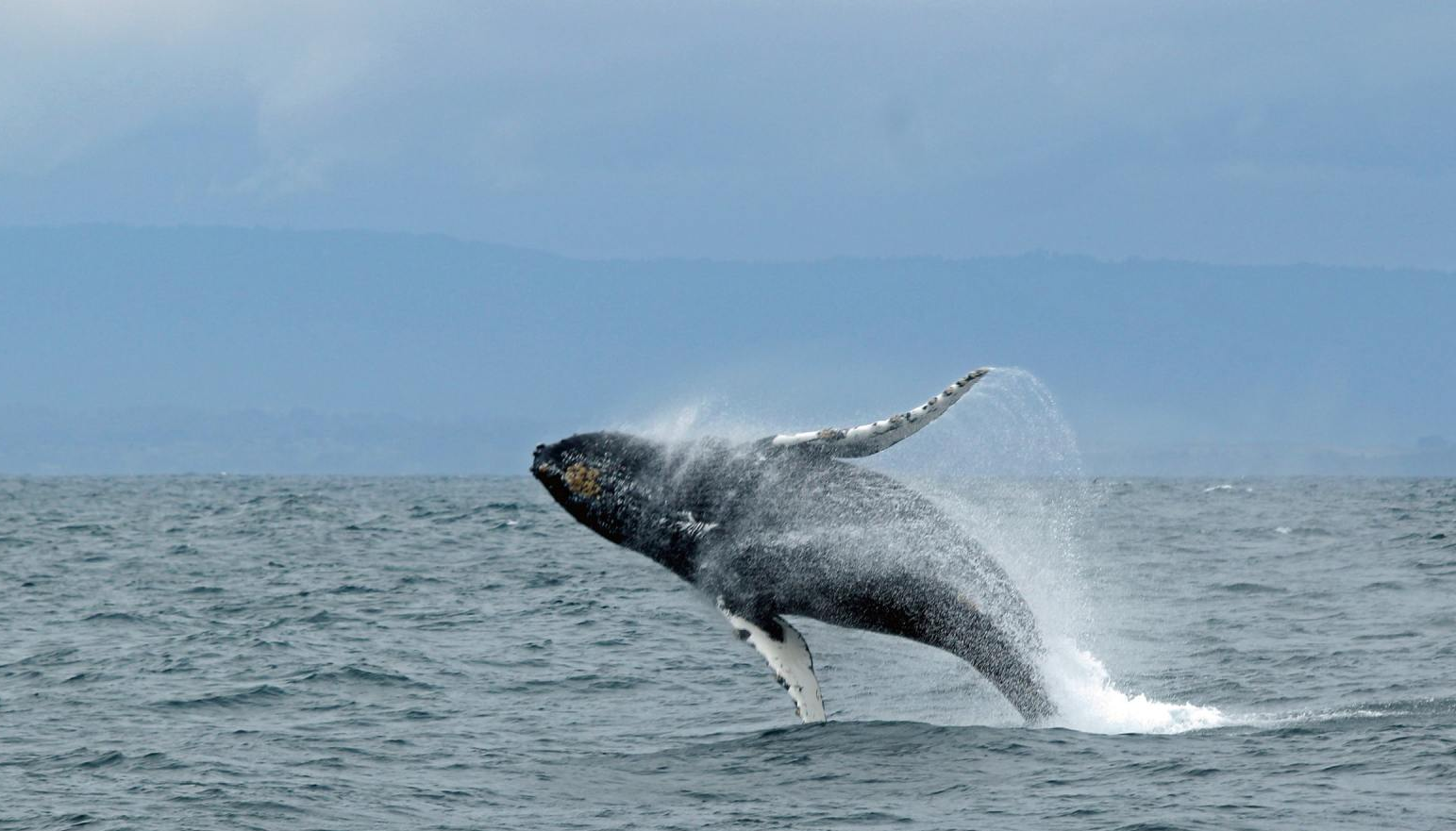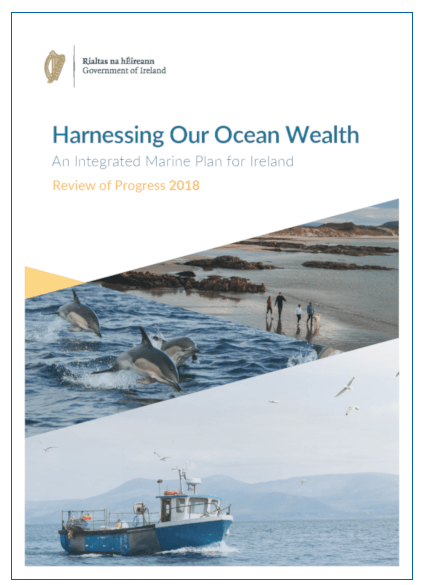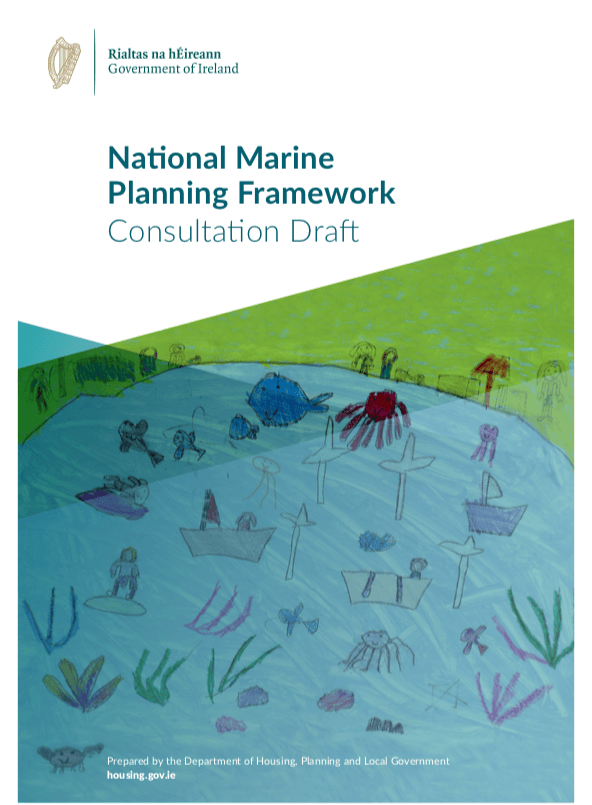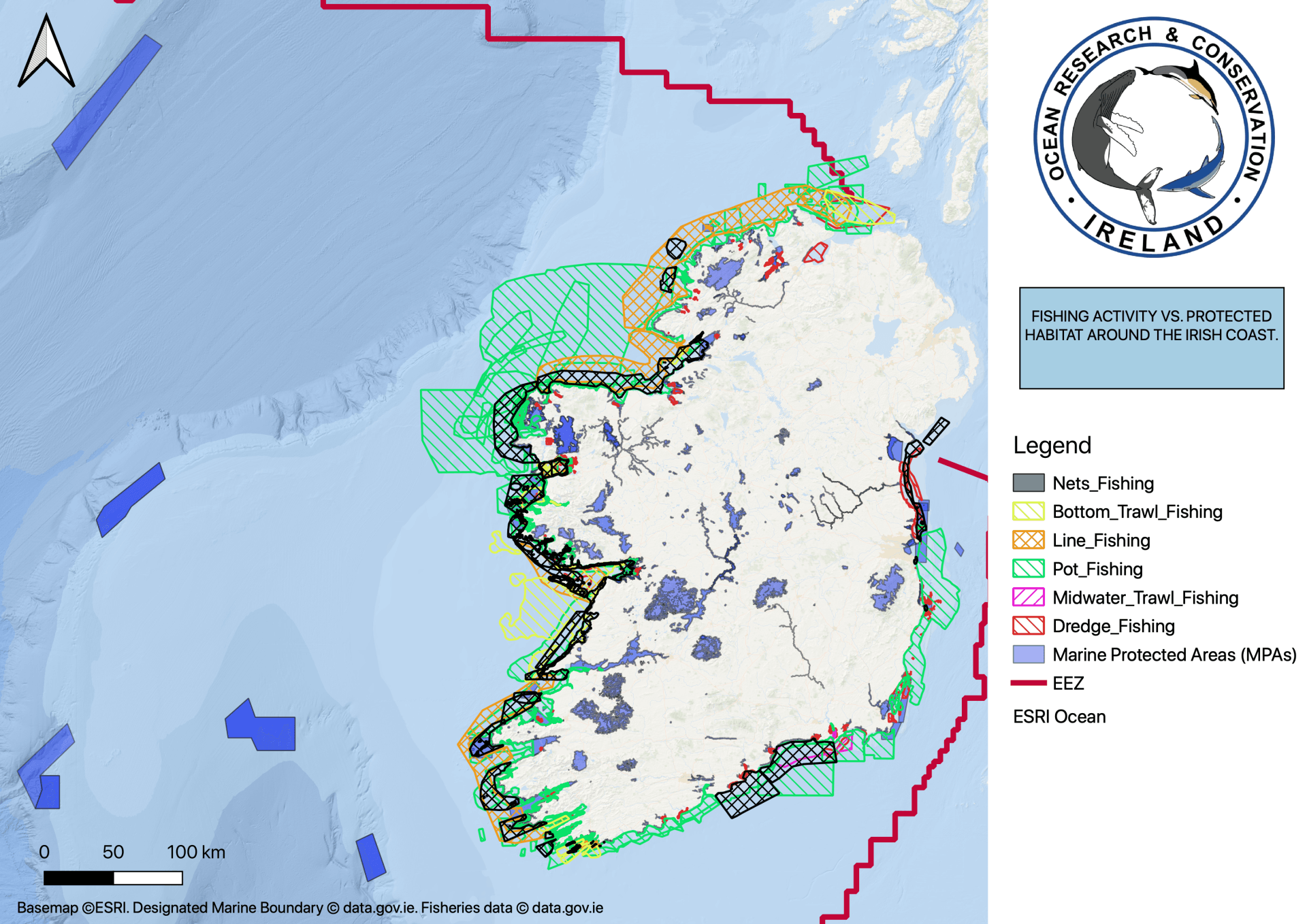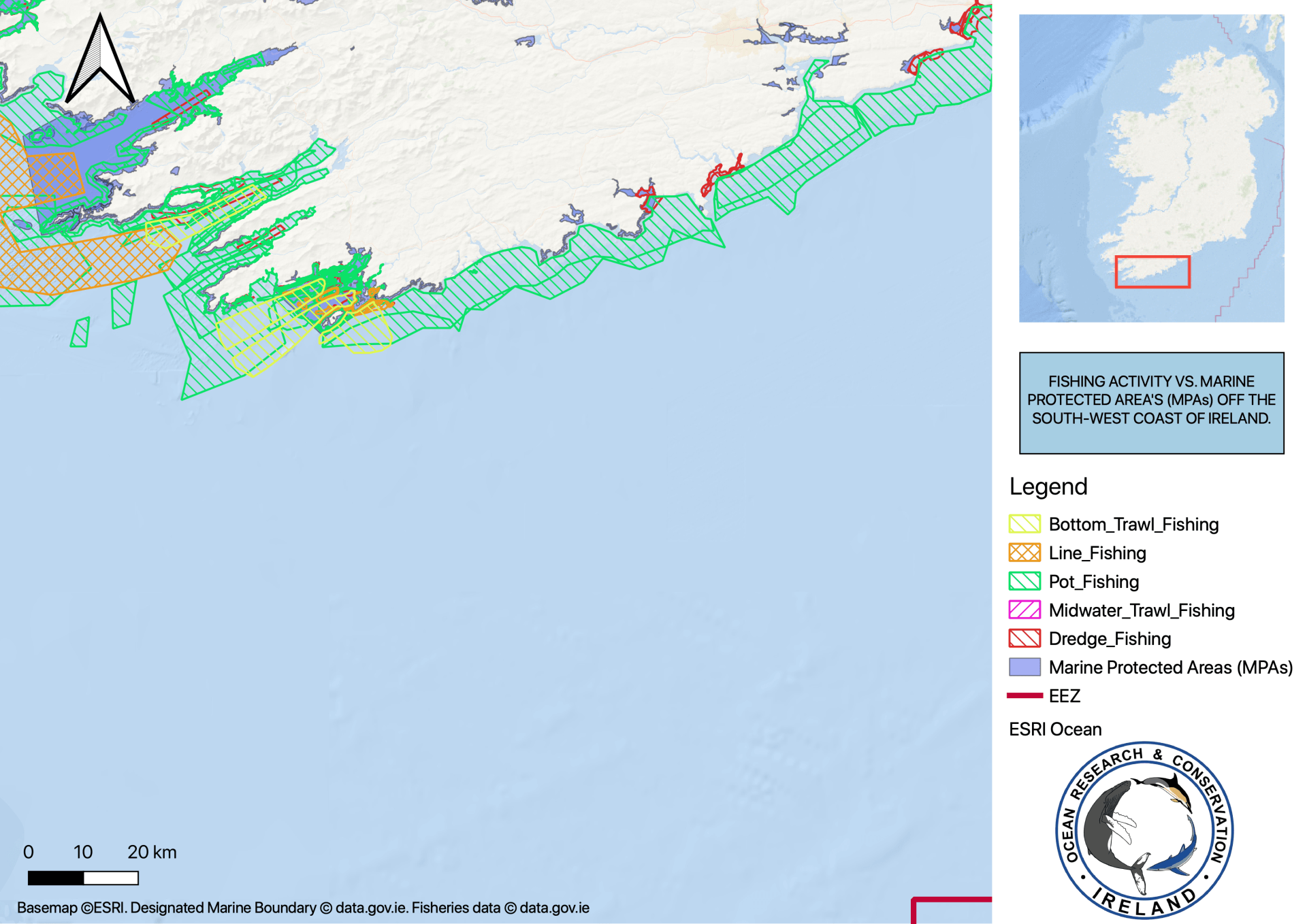Marine Protected Areas (MPAs)
Introduction:
More then three quarters (71%) of the Earth's surface is covered by our oceans. The oceans provide a range of essential ecosystem services, from providing more than 50% of the oxygen we breathe, and storing more than 90% of carbon dioxide from the atmosphere, to food, water, oxygen and climate regulation, yet only 7.44% of it is protected worldwide. Irelands marine territory, otherwise known as the Irish Exclusive Economic Zone (EEZ) is roughly ten times larger than Ireland's landmass, making it one of the largest states in the European Union. Ireland is an Island nation situated in the north-east Atlantic with over 400,000 km² of coastline.
Ireland's marine habitats include deep offshore continental shelves and canyons, and a range of inshore coastal habitats from steep cliff faces to sandy and rocky sea shores, kelp forests, estuaries and salt-marshes. Irish waters support a diverse array of marine species with over 7,300 faunal species recorded in the seas around Ireland, including over 70 species of elasmobranchs (sharks, skates and rays), 24 species of resident and visiting seabirds, with over 500,000 pairs of seabirds around the island of Ireland, 25 species of cetaceans (whales, dolphins and porpoise), and two resident and three visiting pinniped species (seals). Our marine waters support over 400 fish and cephalopod (e.g. octopuses, squid, and cuttlefish) species, and contain some very important spawning and nursery areas for commercial fish species.
In 2019, several alarming reports were issued by respected cohorts of international scientists highlighting that biological diversity, including marine biodiversity, is declining globally at rapidly increasing rates. The
Global Assessment Report on Biodiversity and Ecosystem Services, known as the IPBES report, revealed that two thirds of the marine environment had been "severely altered" by human activity and approximately one third
of reef forming corals, sharks, and marine mammals
face extinction.
The human drivers activities attributed to the loss of biodiversity are overfishing, pollution, land and sea use change, including coastal development for infrastructure and aquaculture, with climate change intensifying their negative impact on marine biodiversity. Evidence from monitoring of natural habitats and species in Ireland’s marine environment indicates that many habitats are not in good condition.
Ireland’s latest reports to the European Commission on the status and trends of bird species protected under the Birds Directive and the conservation status of habitats and species protected under the Habitats Directive were published in 2019. In general, marine mammal species were reported as being in favourable status, although for some cetaceans their status was reported as unknown.
Ireland’s National Biodiversity Action Plan 2017-2021 has as one of its seven objectives to “Conserve and restore biodiversity and ecosystem services in the marine environment”. The Plan notes that pressures from human activities on Ireland’s coastal and marine biodiversity and ecosystem services arise from a growing range of sources including nutrient and chemical discharge from human activities (for example from industry, agriculture, municipal wastewater) and through direct physical disturbance e.g. shipping, recreation and aquaculture; and habitat degradation from pollution, litter, artificial noise and light. Some types of fishing can negatively affect both pelagic and seabed communities, particularly those that support species with low growth rates, soft substrates or cold water coral reefs, and some areas have been heavily impacted by fishing activity. There are also concerns about the level of by-catch of birds, sharks and marine mammals in certain fisheries.
What is an MPA?
An MPA or marine protected area
is a clearly defined area of marine ecosystem, which is managed, conserved and protected from damaging human activities, like overfishing and tourism. Other threats to our marine ecosystem include oil and gas exploration, renewable energy developments, aquaculture, dredging and shipping. They can vary widely in their degree of protection, depending on the pressures to the site and conservation needs, and can include a large variety of zoning and management schemes, ranging from single to multiple-zoning and from no-take to multiple-use areas to seasonal closures. In recent decades, they have been widely endorsed by scientists and policy makers alike as an effective conservation tool when designed, managed and enforced appropriately. Benefits include improved fisheries, increased ecosystem resilience, enhancement of ecosystem services
and socio economic
benefits such as job security
and food provision.
The 2010-2020 Strategic Plan for Biodiversity and the status of
Sustainable Development Goal (SDG) 14, both have a target to protect 10% of coastal and marine areas by 2020. According to the first draft of the the
Global Biodiversity Framework, the target for marine protected areas is increased to 30% by 2030.
The Natura 2000 network designated under the Birds Directive and the Habitats Directive (SPAs & SACs) provides a cornerstone for European designation of Marine Protected Areas (MPAs). Since the entry into force of the Habitats Directive in 1992, almost 4% of European waters have been designated as part of the Natura 2000 network of MPAs.
Ireland committed to establishing MPAs to protect biodiversity under the OSPAR Convention to Protect the Marine Environment of the North East Atlantic. Currently, no legislation is used in Ireland to legally underpin protected areas created to fulfil commitments of the designation of OSPAR MPAS, so a number of its Special Areas of Conservation (SACs) and Special Protected Areas (SPAs) are designated as OSPAR MPAs for marine habitats, under international conventions. Ireland currently has only 2.33% of its waters designated as SACs and SPAs, despite its EU target of 30% by 2030.
The
Marine Strategy Framework Directive
requires European member states, including Ireland, to reach good environmental status (GES) in the marine environment by the year 2020 at the latest. Good environmental status in the marine environment means that the seas are clean, healthy and productive and that human use of the marine environment is kept at a sustainable level. One measure for achieving good environmental status that the Directive identifies is the establishment of a representative and coherent network of Marine Protected Areas. These MPAs should adequately cover the diversity of the constituent ecosystems together with existing MPAs, such as those designated under the Natura 2000 directives, the Regional Sea Conventions or as part of national initiatives. The Directive thus implies that something more comprehensive than the existing marine MPA network (in its current form of implementation) is needed, in order to deliver representative and ecological coherent networks of MPAs.
In 2018, the Inter-Departmental Marine Coordination Group (MCG), on behalf of the Government, developed Harnessing Our Ocean Wealth - An Integrated Marine Plan for Ireland (HOOW).
Harnessing Our Ocean Wealth sets out the Irish Government’s Vision, High-Level Goals, and Key ‘Enabling’ Actions to put in place the appropriate policy, governance and business climate to enable our marine potential to be realised.
Why increase Ireland's MPA's?
Marine Protected Areas (MPAs) have shown to be effective in sustainable management and restoration of the marine environment. MPAs increase biodiversity and ecosystem resilience, can enhance commercial fish and shellfish stocks inside and outside of their boundaries, and even have a role to play in tackling climate change through carbon sequestration. A “coherent network of representative MPAs” is a requirement according to the MSFD.
Ireland has also committed to protecting 10% of its marine waters by 2020 under the Convention on Biological Diversity and a further target of 30% by 2030 is now on the table. The Government previously announced their intention to “significantly expand our network of marine protected areas” and bring forward primary legislation to designate MPAs in 2020.
An increasing need exists for the evaluation and understanding of the effectiveness of marine protected areas operating around the world. Protected Area Management Effectiveness (PAME), and in particular the Management Effectiveness Tracking Tool (METT), is used in many parts of the world. Using such tools, a recent study (Gill et al. 2017) suggests that while ecological factors are key to enhancing the performance of MPAs, available capacity including resources and staff are fundamental for effective protected area management.
The International Union for Conservation of Nature (IUCN) World Commission on Protected Areas initiated the IUCN Green List of Protected and Conserved Areas Standard to increase the number of protected and conserved areas that are effectively and equitably managed and deliver conservation outcomes.
New Paragraph

